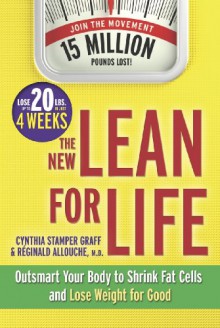Finally, the explanation for why Americans aren’t saving enough: It’s not sexy. Now, spending: that’s sexy.
That’s one of the findings in Thinking Money: The Psychology Behind Our Best and Worst Financial Decisions, airing on public television stations beginning Thursday, Oct. 16; check local listings. It’s produced in association with the FINRA Investor Education Foundation (FINRA is the largest independent securities regulator in the U.S.).
In truth, the show is really about behavioral economics, but that’s not very sexy either.
So the program serves up key principles by interviewing experts from the likes of Princeton, Stanford and Yale — as well as what we call in the journalism trade “real people” — to explain why our brains keep us from doing the right thing with our money and how to outsmart them. For instance, you’ll learn how to combat “the IKEA effect,” which makes you put more value on products you helped create than ones you don’t.
If this all still sounds a little wonky, it’s worth noting that the program has some pretty funny and weird experiments.
For instance, someone gets wine coursed through a vein while in an fMRI (a functional magnetic resonance imaging machine that measures brain activity by detecting changes in blood flow) to see how the brain reacts when it thinks the person is drinking a $90 bottle of pinot noir versus a $10 bottle. In another, the jokey host — comedian/actor Dave Coyne — wears Virtual Reality goggles to see what he’d look like “old.”
As Thinking Money’s producer and writer John Greco told me, the show offers ways “to fight your instinct to spend money now.”
Four lessons from the show:
- Don’t let an overwhelming number of choices paralyze you from making smart investing decisions. In Thinking Money, the brilliant, blind Columbia University business professor Sheena Iyengar (author of The Art of Choosing) discusses her jam study. She let some people select among 24 flavors and others had a choice of six. They were more likely to buy a jam when given a smaller selection; choosing among 24 flavors was too confusing.
The jams, the show explains, are an excellent proxy for all those investment choices employees often have to pick through when deciding where to put their 401(k) money. As it turns out, the more 401(k) choices people have, the less likely they are to invest in the plan. “Iyengar found that so many people are so confused by their 401(k) choices that they invest in what they can understand, like money market funds. But those barely keep up with inflation,” said Greco.
- A good “nudge” can help you achieve your financial goals — especially if the nudge has unpleasant consequences attached. “Behavioral economists like the nudge idea because they don’t have much faith in our ability to make the right decisions,” Walter Updegrave, of RealDealRetirement.com (and a Next Avenue contributor) noted at the Society of American Business Editors and Writers (SABEW)/National Endowment for Financial Education (NEFE) Personal Finance Reporting Workshop I attended on Thursday.
Thinking Money describes the clever, free website, Stickk.com, where users sign up for “commitment contracts” to force them to reach their goal. (The genesis of the site came from Yale economists.) When setting your goal and a date, you can also tell Stikk which organization you detest that should receive money charged to your credit card if you fail.
On the show, grad student Graham Brown says he took out a commitment contract to force himself to make lunch three days a week and put the money he’d saved toward a road trip with a buddy. It worked.
- Beware of confirmation bias. This is when you look for justifications for decisions you’ve made or are about to make by finding ones that support your view and ignoring ones that don’t. Thinking Money says the dot com bubble of the 1990s is an example of this. So was the 1630s tulip bubble in Holland, when, as Greco said, “bulbs were going for 10 times the salary of skilled craftsmen and were completely overvalued and a lot of fortunes went with them.”
How to avoid confirmation bias? Daylain Cain, Assistant Professor of Organizational Behavior at Yale University, advises in the show that when you’re about to make an investment purchase, be a devil’s advocate and ask yourself: What could go wrong?
“Any of us can do that, we just have to be motivated,” said Greco.
- Don’t hand over money to a crook because you fear you’ll miss out on a spectacular investment opportunity if you don’t. AARP’s Washington state director Doug Shadel, a financial fraud expert (“he has interviewed more con men than I have had hot meals,” said Greco), explains in the show how fraudsters and marketers prey on that behavior.
One secret of con artists, says Shadel: They look for people who’ve just lost a lot of money because those people are angry and upset. As a result, they aren’t thinking clearly.
“That makes them more susceptible to the con man’s pitch,” said Greco.
You can find other useful tips on saving, investing, controlling debt and protecting your future at FINRA’s Saveandinvest.org site.
After watching Thinking Money, maybe you’ll feel a nudge to trim back spending and save more for your impending retirement.
Greco told me that, since working on the show, that’s exactly what he’s done. “I work primarily at home and used to think nothing about buying lunch out. Now I find myself making lunch a lot more.”
He added: “It’s never too late to change spending habits that can hurt you.”


 Log in with Facebook
Log in with Facebook 






